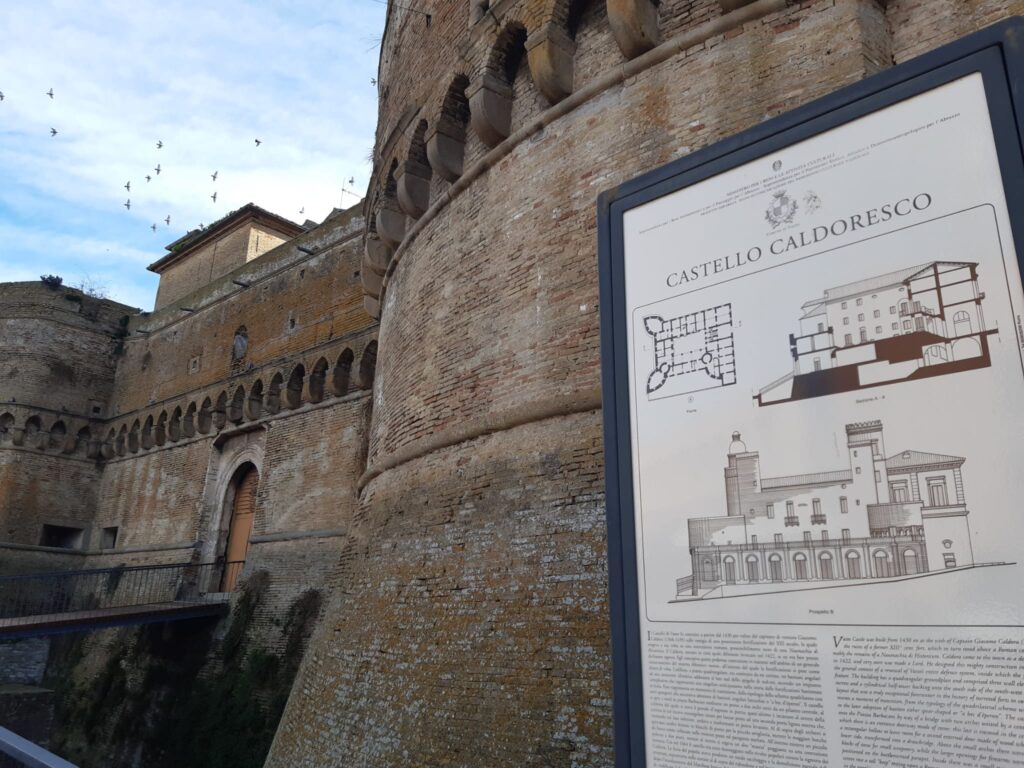The Caldoresco Castle in Vasto is one of the city’s most significant historical landmarks. With its imposing silhouette standing out against the sky, it has symbolized power and strength for centuries.
The current structure, with its eclectic and composite forms, serves as a living testament to the city’s rich history. By observing it closely, one can trace the events of two thousand years, etched into its walls.
Beneath the castle, on the side facing Piazza Rossetti, lie Roman walls—remnants of the ancient Histonium amphitheater. These materials were likely repurposed during the Angevin era to construct a fortress that controlled access to the city via the road leading to Naples, the capital of the Kingdom.
When Jacopo Caldora took control of Vasto in 1422, a time marked by political instability and frequent conflicts between local lords, he recognized the need to fortify the city. His vision included enclosing Vasto d’Aimone within new defensive walls, integrating structures built outside the earlier Angevin fortifications and reusing the remnants of the Roman city.

Construction began in 1427, likely under the direction of Mariano di Jacopo da Siena, known as Taccola, a renowned military engineer. Caldora expanded the castle using a “bastioned wall” design, featuring three sturdy almond-shaped bastions to deflect artillery fire and a fourth circular bastion at the location of the “castle gate.” This gate connected what is now Piazza Rossetti to Piazza Diomede.
The Caldoresco castle as seen today from Piazza Barbacani largely dates back to Caldora’s 1427 construction, although it has undergone significant changes.
Originally, two additional towers within the walls gave it an appearance similar to Caldora’s castle in Pacentro. These towers, however, were lost over time.
The towers now visible—one crowned with an octagonal lantern and the other with Guelph battlements—were added by Marquis Cesare Michelangelo d’Avalos. He purchased the castle from the Municipality in 1701 and restored it after its use as both a courthouse and a prison.
During the Napoleonic era, the castle changed hands once more, this time to Salvatore Palmieri. He enlisted the city’s leading architect, Pietrocola, to partially transform the castle into the neoclassical palace we see today from Piazza Rossetti.
As a result, the Caldoresco Castle now offers two distinct faces: from the north, it appears as a late-medieval fortress, complete with a moat and drawbridge; from the south, it presents itself as the neoclassical Palazzo Palmieri.

